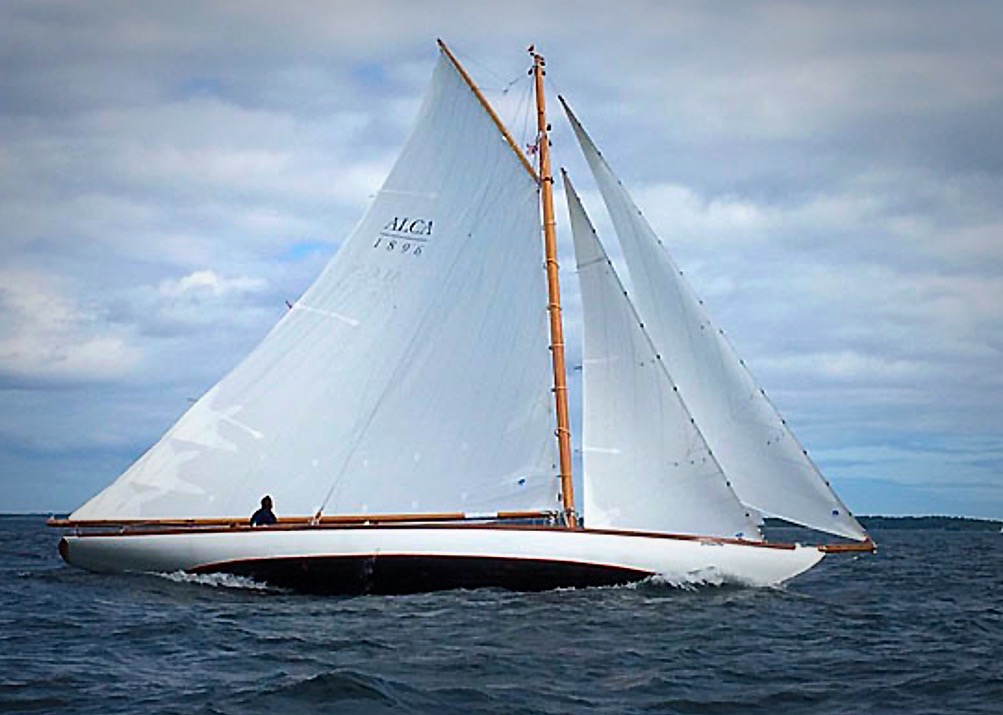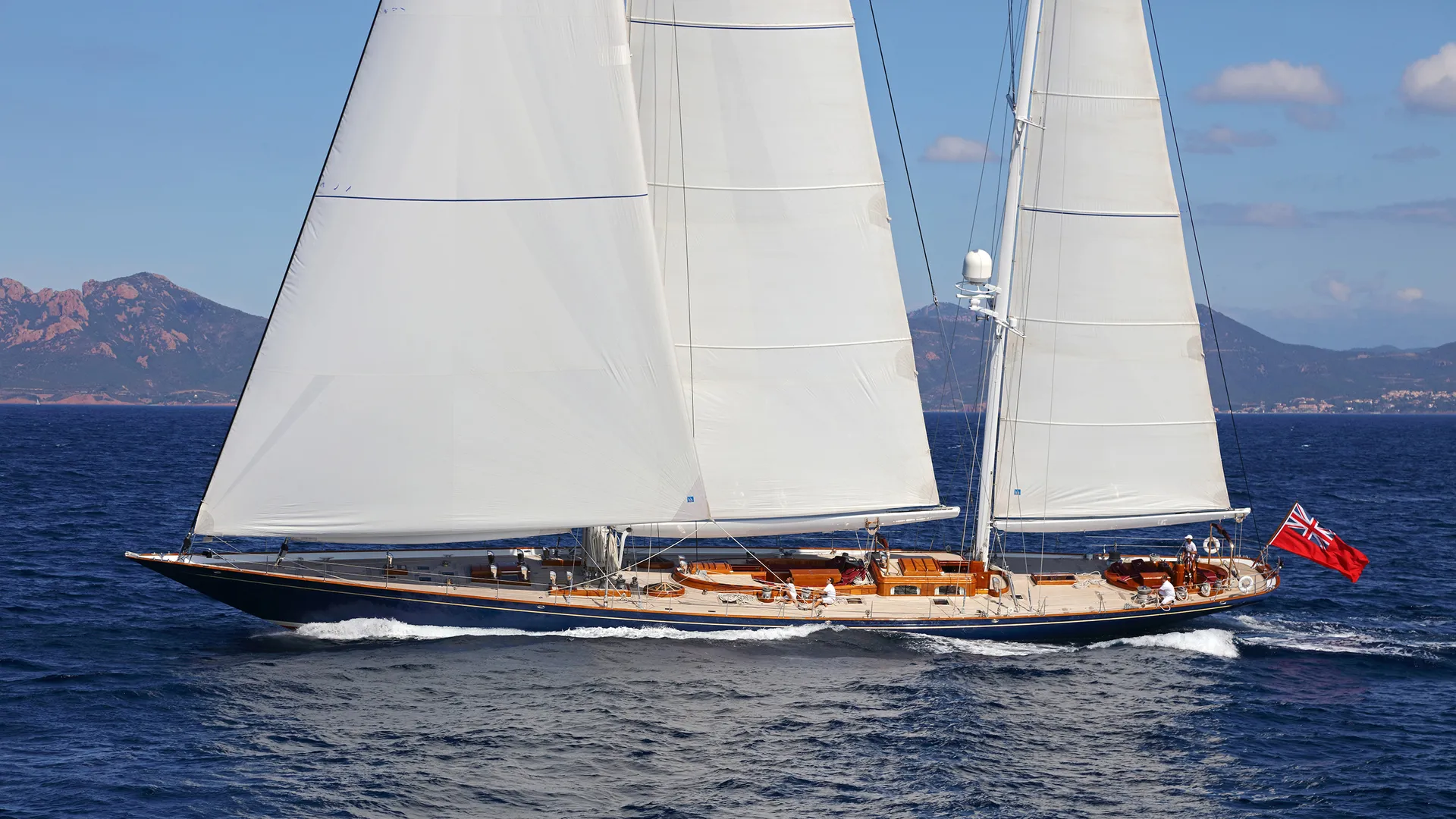
Sail Number: 95 S5
Type: SK-95 (skärgårdskryssare)
LOA: 56′ 3″ / 17.15m – LOD: 56′ 3″ / 17.15m – LWL: – Beam: 8′ 11″ / 2.73m – Draft: 7′ 7″ / 2.30m – Displacement: 8.5 tons – Hull material: Wood – Designer: August Plym – Type: 1918 95 Square Meter Rule – Built by: Stockholms Båtbyggeri – Year Built: 1919 – Engine: Yanmar 30 – Current Name: Ala-Ala – Former name(s) Dafne 1919-1974 – Flag: Sweden (SE) – Locator:
Historical:
Sail Yacht Society comments (SYS) sailyachtsociety.se – Skrov och botten är i furu, däcket är av Oregon pine medan sittbrunn, durkar och ruff är utförda i mahogny. Riggen är tillverkad av Benns. Dimensioner: LOA 17 meter Bredd 2,73 meter Deplacement. 7900 kg (exkl rigg).
Vi som äger henne idag har med några få undantag för kappsegling mest nöjesseglat båten längs ostkusten, som längst till Åland och Öland.
Vintern 2015/16 byggdes sittbrunnen om av Thomas Larsson och Jonas Lorensson. ”Lådorna” från 70-talet som stod på däck ersattes av en lösning som är mer tidstypisk.
Provenance (The Wall of Remembrance – The Owners, Crew & Notable Guest):
Owner: (2019) – Karl Sundholm, Stajic Lennart, Martin Luthander, Karl Orton och Kalle Pettersson
Archipelago Cruise Rule
The rule was created in 1908 by engineer Karl Ljungberg and was an attempt to produce new good boats, which would not be too extreme and thus expensive. Despite this, the first version of the rule led to the boats becoming too long, narrow and too weak which is why the rule was revised in 1916, 1920 and 1925. The rule has the following nine classes: 15, 22, 30, 40, 55, 75, 95, 120 and 150 m². These numbers indicate the maximum measured sail area and the basic idea is that the sail area should be limited, but that the hull size with certain restrictions should be free.
The hull rules specify four dimensions that affect the speed of a boat: displacement, queue length, average width and freeboard height. These dimensions are in relation to the waterline length, which is measured a few centimeters above the actual waterline. The maximum speed of a displacing boat is proportional to the square root of its waterline length . If you want to increase the maximum speed of the boat by increasing the waterline length, you must, according to the regulations, compensate this with an increase in the dimensions of the four speed inhibiting factors above.
The rule gives the designer great freedom and most boats are unique in their kind. Today’s archipelago cruise rule is based on the 1925 rule with additions to make it possible to use modern materials such as fiberglass-reinforced plastics in the hull and aluminum in the rig and thus not outperform the boats built with classic materials. However, most are long, narrow, with low freeboard and a high rig. The boats were originally built in honduras mahogany or pine . The archipelago cruisers that are being built today are largely exclusively made of fiberglass reinforced plastic.

Originally, the archipelago cruiser was a boat that sailed only in the Baltic Sea, but today many boats have been moved to the US and Central Europe where they are appreciated for their beauty and speed. Among legendary and famous archipelago cruisers are August Plyms SK 150, “EBE”, now ” Beatrice Aurore “, Gustaf Estlanders SK 150 “Singoalla”, Erik Salanders SK 95, “Gerdny”, now “Kerma”, and SK 75: “Gun “and” Kajsa “and Tore Holms SK 95 Britt-Marie, which after rebuilding today, however, can not be classified as an archipelago cruiser.
The golden age of the archipelago cruisers occurred during the period 1910-1930 and this development was brought forward especially by Erik Salander, who with designs such as the SK 55s “Britty”, “Gun”, “Eva” and “Nerida” got a respected name. His extremely long SK 75 “Ila”, built in 1917, with a length of 15.35 meters and with efficient lines, easily defeated all previously built boats in the class. After Salander stopped drawing archipelago cruisers in 1920, it was mainly Gustaf Estlander and Tore Holm who led the development further.
Other prominent designers of large archipelago cruisers were Knut Holm, with SK 75: “Blanka” and “Fylgia” and Zaké Westin with SK 120 “Ingun”. Despite the rule changes, the boats in all classes became narrower and longer. Estonia’s SK 150 “Singoalla” was with LOA 24 meters, not only the longest but also the fastest of all archipelago cruisers.
Resources
Sail Yacht Society
Sail and Sea





